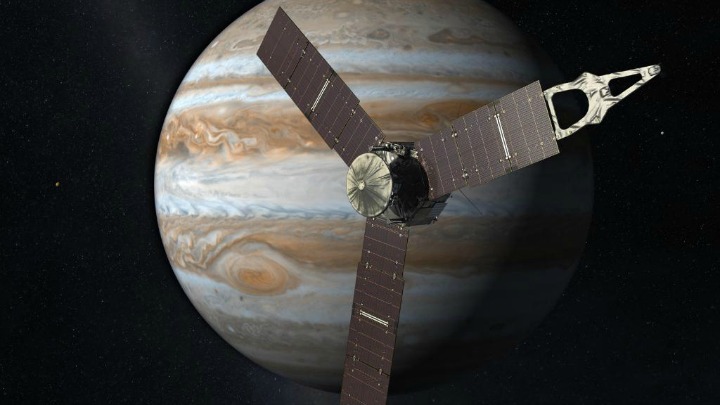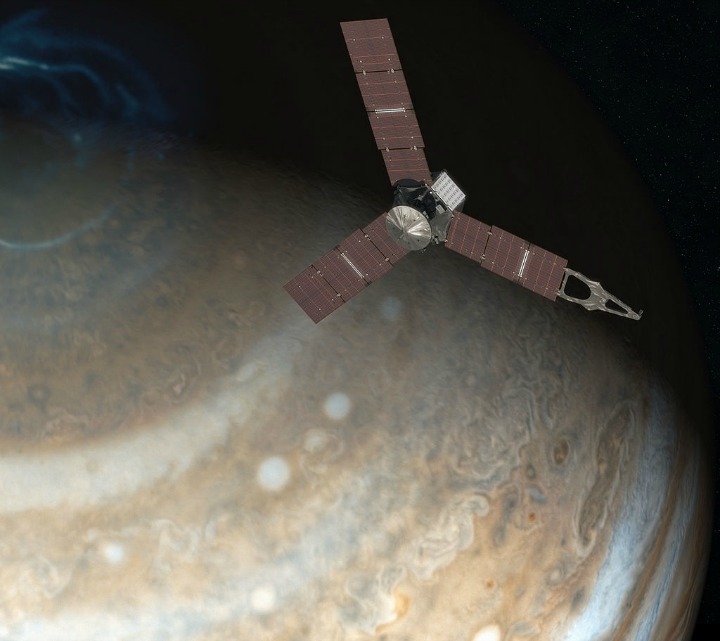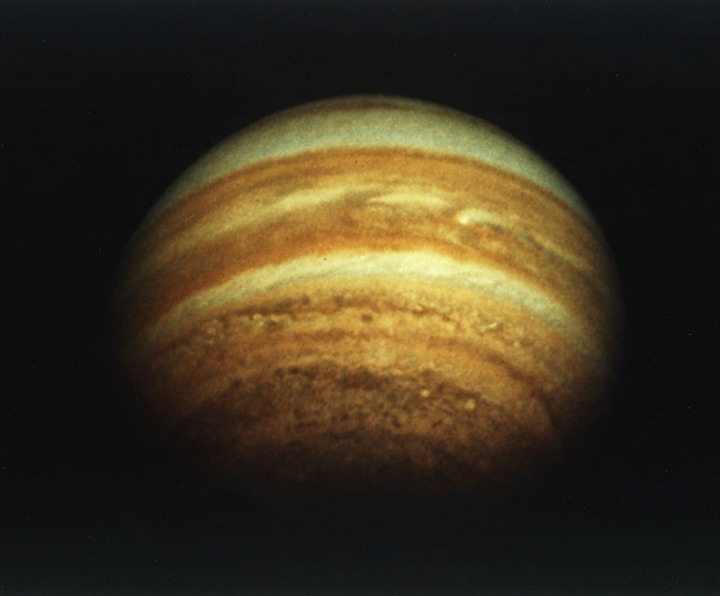Latest Juno Photos Show a Different Side of Jupiter

Image by NASA (https://twitter.com/NASA/status/750179905040769024) [Public domain], via Wikimedia Commons
It was a day of celebration at NASA when Juno arrived in Jupiter’s orbit on July 4, 2016, the day the US commemorated Independence Day. The landmark achievement of Juno was a first in many aspects in the realm of astronomy. Its mission was to study Jupiter: from its atmosphere to its erratic weather patterns, and the planet’s interior composition.
Juno’s payload include infrared and ultraviolet spectrometers, a magnetometer, radiometer, and the JunoCam which can take high resolution photos of the Jovian planet. The journey of Juno took five years since its launch from Earth in 2011. Today, it has reached its destination, and a new phase begins.
Death-defying stunt

Image by Image credit: NASA/JPL-Caltech [Public domain], via Wikimedia Commons
After successfully hovering above Jupiter for the first time, Juno will now orbit the planet 36 more times, flying out and swooping in each time closer to the gas giant’s atmosphere. Close encounter fly-bys will happen every 14 days giving scientists more opportunities to study the planet’s behavior and composition.
Such a task is not easy for Juno. The dangerous electromagnetic (EM) environment of Jupiter is a dangerous challenge as it can damage its equipment each time it takes a dip in Jupiter’s atmosphere. Juno also has to circumvent the powerful radiation belts that extend up to 400,000 miles from Jupiter’s surface. This has to be put into consideration as Juno comes close to Jupiter multiple times, with entry points at the poles to which has least exposure to EM.
Protecting the crucial instruments of Juno is a 10 mm radiation vault that blankets them in order to divert electrical charges. Even cords and cables are metallically braided to prevent them from getting fried easily. It is expected however that not all of its instruments will last 36 passes. The radiometer for example may only last 11 times while JunoCam might only even last eight times or less.
Bluer at the poles

Image by NASA Ames [Public domain], via Wikimedia Commons
Jupiter has been known to be a reddish-orange gas giant with violent and stormy weather. The Voyager and Cassini probes were able to take some stunning photos of these during their fly-bys to Jupiter but they were only able to capture the planet’s atmosphere around its equator. Juno is the first probe to snap photos of the north and south poles of the planet. And the results have stunned NASA scientists.
Juno revealed that at the poles, Jupiter’s weather was cloudier, calmer and bluer– truly something unexpected from a planet that was originally thought of having unstable weather occurrences. Juno snapped 28 photos on August 27 just 2,500 miles above Jupiter. According to Juno’s team leads, they observed that higher in the atmosphere, clouds were lighter; and lower in the atmosphere, clouds were darker.
Candice Hansen-Koharcheck, senior scientist and lead of JunoCam, noted that taking photos of Jupiter’s poles were not so easy. They had to do several attempts before they were able to successfully capture some good images. Some were like taking photos of a fog bank, she said.
Other observations
Aside from the photos taken by JunoCam, it also transmitted other data from its infrared spectrometer and radiometer. The JIRAM or Jovian Infrared Auroral Mapper, a device used to observe the massive auroras emitted by Jupiter, was able to snap some infrared images showing a heat map of Jupiter’s south pole. Warm and hot spots are observed around the poles based on the spectrometer but much more information is needed as to the composition of Jupiter’s interiors.
The Radio/Plasma Wave Experiment (Waves) is another instrument onboard Juno that was able to record radio transmissions emanating from the gas giant. The eerie sounds were coming from the auroras at the poles of Jupiter. This was the first time an audio recording was taken from the planet.
The latest data sent by Juno though is only the tip of the iceberg. NASA is still determined to know more about the elements in the inner parts of Jupiter and if the planet has a solid core. For now, Juno will be preparing for another deep dive and hopefully, more information will be gathered to shed light on the most intriguing questions about the planet.